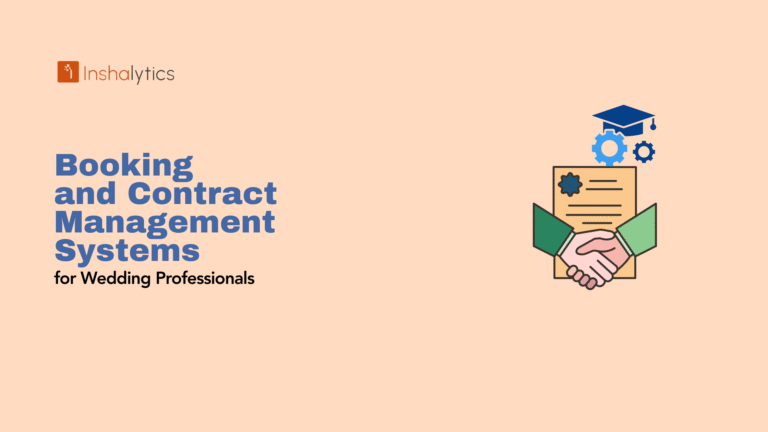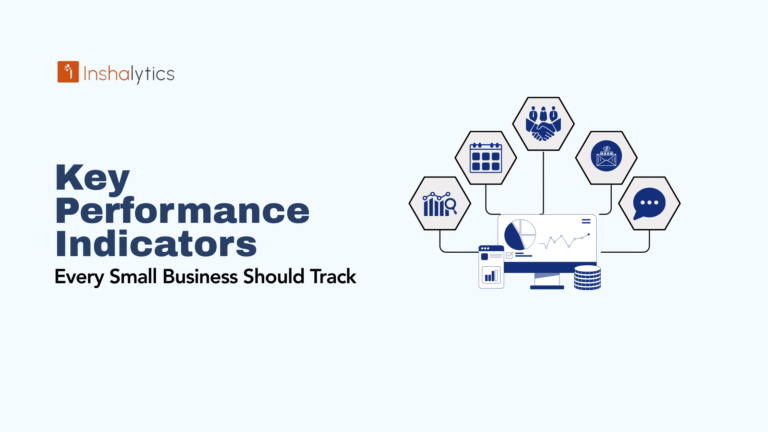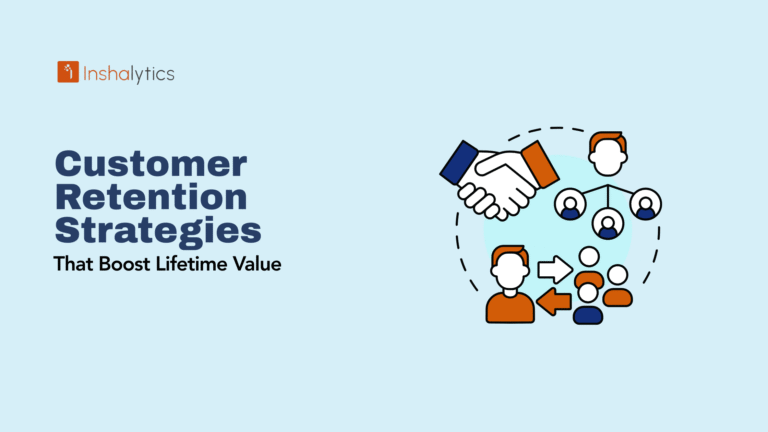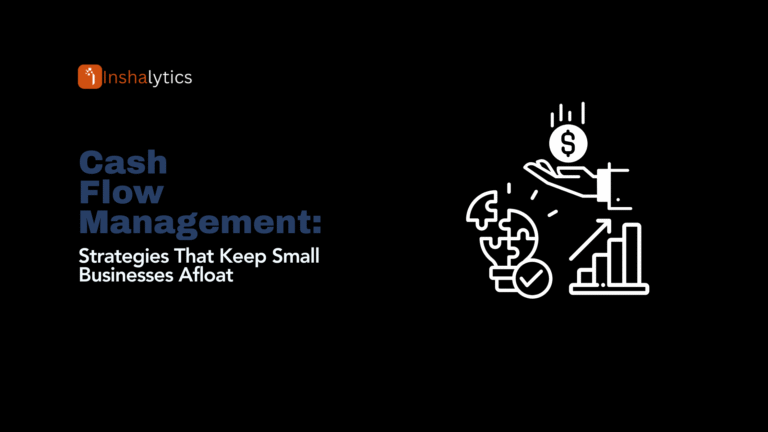You’re spending money to drive traffic to your website. But what happens when visitors arrive? Are they converting into customers, or quietly leaving without a trace?
For small businesses, every visitor counts. You can’t afford to waste marketing dollars on guesswork. That’s where A/B testing transforms your approach turning assumptions into data-driven decisions that directly impact your bottom line.
The best part? You don’t need a massive budget or a team of data scientists. Small businesses are actually in a unique position to benefit from A/B testing because even modest improvements can create significant revenue gains. The benefits of A/B testing for SME marketing extend far beyond websites they apply to emails, ads, and social content, helping small teams maximize results from every campaign.
What Is A/B Testing?
A/B testing, also called split testing, is a method of comparing two versions of something to see which performs better. Think of it as a taste test for your marketing.
Here’s how it works: You show version A (the original) to half your audience and version B (the variation) to the other half. Then you measure which version achieves your goal whether that’s more clicks, sign-ups, purchases, or any other action that matters to your business.
The beauty of A/B testing is its simplicity. You’re not overhauling your entire website or rebranding your business. You’re making one small, strategic change at a time and letting real customer behavior tell you what works.
For example, a local bakery might test two email subject lines: “Weekend Specials” versus “Guess What Just Came Out of the Oven?” If the playful version gets 27% more opens, that’s valuable data you can use again and again.
Why A/B Testing Drives Revenue Growth for Small Businesses?
Small businesses often operate on tight margins where every percentage point of improvement matters. A/B testing delivers results in three critical ways:
Optimize What You Already Have
You’re already paying for website traffic through SEO, paid ads, or social media. A/B testing helps you convert more of those existing visitors into customers. Instead of spending more on advertising, you’re making your current marketing investment work harder.
Research shows that well-executed A/B tests can boost landing page conversions by up to 30%. For a small business generating $100,000 in annual revenue, a 30% increase means an additional $30,000 without spending an extra dollar on advertising.
Make Confident Business Decisions
Should you change your homepage headline? Would a different call-to-action button color increase sales? Without testing, you’re guessing. A/B testing removes the uncertainty and replaces it with evidence.
One online yoga instructor changed her landing page headline from “Join My Classes Today” to “Ready to Finally Stick With Yoga?” The result? She doubled her sign-ups. That’s the power of knowing instead of hoping.
Compound Small Wins Into Big Results
A/B testing isn’t about finding one magical change that transforms your business overnight. It’s about accumulating small, validated improvements that compound over time.
If you improve your email open rate by 15%, your landing page conversion rate by 20%, and your checkout completion rate by 10%, the cumulative effect on revenue can be dramatic. These incremental gains add up to substantial business growth.
Real Revenue Results: A/B Testing Case Studies for Small Businesses
Let’s look at concrete examples of businesses that used A/B testing to drive real revenue impact:
Clarke’s Shoes: $2.8 Million from One Simple Change
Clarke’s wanted to increase conversions on their e-commerce site. They ran an A/B test that made their free shipping offer more prominent and visually appealing. The result? A 2.6% increase in conversion rates that translated to an additional £2.8 million in revenue annually. The lesson: highlighting value propositions clearly can dramatically impact purchasing decisions.
Grene Agriculture: 12% Increase in Lead Generation
Grene, a Polish e-commerce company, analyzed its mini cart page and discovered users were confused by certain elements. After running A/B tests to improve clarity and prominence of key features, they saw a 12% overall increase in lead generation. Small design tweaks based on user behavior created measurable business value.
Intertop Fashion Retailer: 54.68% Conversion Rate Lift
Intertop tested changes to their checkout flow and product pages. The winning variation increased their conversion rate by 54.68%. When they rolled out the changes site-wide, average revenue per user grew by 11.46% and checkout abandonment decreased by 13.35%. This demonstrates how strategic testing throughout the customer journey multiplies impact.
FSAstore.com: 53.8% Revenue Per Visitor Increase
This health products retailer tested removing a confusing subheader from their product pages. The simplified version showed a clear boost in conversions a 53.8% increase in revenue per visitor. Sometimes what you remove is just as important as what you add.
The common thread? None of these businesses made massive, risky changes. They identified specific elements to test, ran controlled experiments, and implemented winners. You can do the same.
5 Simple A/B Tests Every Small Business Should Run First
If you’re new to A/B testing, start with these high-impact, easy-to-implement tests:
1. Headlines and Page Titles
The first thing visitors read on your page is the headline. It determines whether they stay or leave. Test different approaches:
- Feature-focused vs. benefit-focused
- Question format vs. statement format
- Specific numbers vs. general claims
Example: “CRM Software for Small Businesses” vs. “Close 50% More Deals with Our CRM”
At Inshalytics, we help businesses identify which messaging resonates most with their target audience through data-driven analysis and testing frameworks.
2. Call-to-Action Buttons
Your CTA is where conversions happen. Small changes can yield big results:
- Button text: “Buy Now” vs. “Add to Cart” vs. “Get Started”
- Button color and size
- Button placement on the page
- Urgency language: “Sign Up” vs. “Start Your Free Trial Today”
One case study showed that changing CTA copy from “Buy” to “Add to Cart” increased conversions because it reduced the psychological commitment customers felt.
3. Hero Images and Visual Elements
Do your visitors respond to images of people, products, or lifestyle shots? Test different visual approaches:
- Images with people vs. product-only shots
- Static images vs. video
- Large hero images vs. minimal visuals
A boutique ecommerce store tested two product page layouts one with large images and minimal text, another with detailed descriptions and customer reviews. The detailed version led to 18% more purchases.
4. Form Length and Fields
Every form field is a barrier to conversion. Test:
- Long forms vs. short forms
- Required vs. optional fields
- Multi-step forms vs. single-page forms
- Form placement (sidebar vs. center)
5. Email Subject Lines
Email marketing remains one of the highest-ROI channels for small businesses. Test subject lines to improve open rates:
- Personalized vs. generic
- Question-based vs. statement-based
- Urgency-driven vs. value-driven
- Emoji vs. no emoji
Testing email variations can increase email revenue by up to 20%, making this one of the most impactful tests you can run.
How to Run Your First A/B Test: Step-by-Step Guide?
Ready to start testing? Follow this proven framework:
Step 1: Define Your Goal and Baseline Metrics
Before you test anything, you need to know what success looks like. Ask yourself:
- What specific action do I want visitors to take?
- What’s my current performance?
- What improvement would be meaningful?
Be specific. Instead of “increase sales,” aim for “increase product page to cart additions by 15%.”
Set up Google Analytics or another analytics platform if you haven’t already. You need at least 2-4 weeks of baseline data to understand your current performance.
Common goals include:
- Increase email sign-ups
- Reduce bounce rate
- Improve click-through rate on CTAs
- Boost checkout completion
- Increase time on page
Inshalytics specializes in helping businesses identify the right metrics to track and establish proper baseline measurements before testing begins.
Step 2: Choose One Element to Test
This is critical: test only ONE element at a time. If you change both the headline and the button color simultaneously, you won’t know which change drove the results.
Focus on elements that:
- Directly impact your goal
- Are easy to change
- Appear on high-traffic pages
Start with high-impact areas like your homepage, primary landing pages, or checkout process.
Step 3: Create Your Variations
Develop your alternative version (version B) based on:
- Data from heatmaps showing where users click
- Customer feedback and surveys
- Best practices from your industry
- Hypothesis about what might work better
Keep changes clear and distinct. Don’t make subtle tweaks that are hard to notice. Make meaningful variations that will likely produce measurable differences.
Step 4: Run the Test (And How Long to Wait)
Here’s where many businesses make mistakes: they end tests too early. You need:
- Sufficient sample size: At least 100-200 conversions per variation for reliable results
- Full business cycles: Run tests for at least 1-2 complete weeks to account for day-of-week variations
- Statistical significance: Most A/B testing tools will calculate this automatically
Don’t stop your test just because you see early positive results. Random fluctuations can be misleading. Wait for statistical significance AND your predetermined sample size.
If you have lower traffic, tests will take longer. That’s okay. Patience leads to reliable data.
Step 5: Analyze Results and Implement Winners
Once your test reaches statistical significance, analyze the results:
- Which version performed better?
- By how much?
- Were there unexpected insights?
- Can you apply the learnings to other pages?
If version B wins, implement it permanently. If version A (the original) wins, that’s valuable too you’ve validated your current approach and can test something else.
Document everything. Keep a testing log with:
- What you tested
- Your hypothesis
- Test duration
- Results
- Key learnings
Inshalytics provides comprehensive A/B testing management, from hypothesis development through implementation, ensuring you get actionable insights from every test.
Best A/B Testing Tools for Small Business Budgets
You don’t need expensive enterprise software to start testing. Here are tools that fit small business budgets:
Free and Affordable Options
VWO (Free Plan Available) Visual Website Optimizer offers a free plan for websites with under 50,000 monthly visitors. It includes A/B testing, heatmaps, and session recordings everything a small business needs to start optimizing.
Google Optimize (Note: Discontinued in 2023) While Google Optimize is no longer available, many alternatives offer similar functionality at accessible price points.
Hotjar (Starts at Free) While primarily known for heatmaps and session recordings, Hotjar offers basic A/B testing capabilities. Their free plan supports up to 35 daily sessions, making it perfect for small businesses just starting out.
Mid-Range Solutions
Convert.com (Starting at $399/month) Convert is specifically designed for small to medium-sized businesses doing in-house optimization. It offers intuitive drag-and-drop functionality, excellent customer support, and doesn’t require technical expertise. Perfect for businesses ready to invest in serious optimization.
Crazy Egg (Starting at $49/month) offers A/B testing bundled with powerful user behavior analytics. Good for businesses that want to understand both what to test and how variations perform.
Choosing the Right Tool
Consider these factors:
- Your monthly traffic volume
- Technical expertise of your team
- Budget constraints
- Integration with your existing tech stack
- Support and training offerings
Start with a tool that matches your current needs, knowing you can upgrade as your testing program matures.
Inshalytics can help you select and implement the right A/B testing tools for your specific business needs, ensuring you get maximum value from your investment.
Common A/B Testing Mistakes Small Businesses Make (And How to Avoid Them)
Learn from others’ mistakes:
Mistake #1: Testing Too Many Elements at Once
If you change the headline, button color, and image simultaneously, you can’t determine what drove the results. Test one element at a time, especially when starting out.
Mistake #2: Stopping Tests Too Early
Seeing positive results after two days is exciting, but premature. Run tests for full business cycles and reach statistical significance. One business almost implemented a checkout redesign that would have cost them £7 million annually because early results looked positive full testing revealed the design actually decreased conversions.
Mistake #3: Testing Without Sufficient Traffic
A/B testing requires meaningful sample sizes. If your page gets 100 visitors per month, you’ll need to run tests for months to get reliable data. Start testing on your highest-traffic pages.
Mistake #4: Ignoring Mobile vs. Desktop Differences
A change that works beautifully on a desktop might fail on mobile, or vice versa. Segment your test results by device type to understand the full picture.
Mistake #5: Testing Without a Clear Hypothesis
Random testing leads nowhere. Each test should answer a specific question based on a hypothesis. “I think making the CTA button larger will increase clicks because users currently scroll past it” is a testable hypothesis. “Let’s try different colors” is not.
Mistake #6: Not Documenting and Learning
If you don’t record what you tested and why, you’ll repeat mistakes and miss opportunities to apply learnings across your site. Maintain a testing log.
Mistake #7: Testing Low-Impact Elements
Not all tests are created equal. Testing button colors might yield a 2% improvement, while testing your value proposition could yield a 50% improvement. Focus on high-impact elements first.
From Test to Revenue: Calculating Your A/B Testing ROI
Want to prove the value of A/B testing to yourself or stakeholders? Calculate ROI:
Basic ROI Formula
ROI = (Revenue Gain – Testing Cost) / Testing Cost × 100
Calculate Revenue Gain
- Determine Revenue Per Session (RPS) for control and variation
- Calculate the difference: RPS (Variation) – RPS (Control)
- Multiply by projected annual sessions
- Result = Annual Revenue Gain
Example Calculation
Let’s say:
- Current conversion rate: 2%
- Test result conversion rate: 2.4%
- Average order value: $100
- Monthly sessions: 10,000
Control Revenue: 10,000 sessions × 0.02 × $100 = $20,000/month Variation Revenue: 10,000 sessions × 0.024 × $100 = $24,000/month Monthly Gain: $4,000 Annual Gain: $48,000
If your testing costs (tools, time) were $5,000 for the year: ROI = ($48,000 – $5,000) / $5,000 × 100 = 860%
That’s an 860% return on investment from a single successful test.
Beyond Direct Revenue
A/B testing also provides value through:
- Risk mitigation (avoiding costly mistakes)
- Faster decision-making
- Deeper customer understanding
- Competitive advantages
Inshalytics provides detailed ROI tracking and reporting, helping you demonstrate the business value of your optimization program to stakeholders.
A/B Testing Action Plan: Your 30-Day Quick Start
Ready to get started? Here’s your roadmap:
Week 1: Foundation
- Set up Google Analytics (if not already done)
- Choose an A/B testing tool
- Identify your highest-traffic pages
- Review analytics to find problem areas (high bounce rates, low conversion rates)
- Document 3-5 potential test ideas
Week 2: Preparation
- Select your first test (start with something high-impact but easy to implement)
- Write a clear hypothesis
- Determine your goal metric
- Collect 1-2 weeks of baseline data
- Create your variation
Week 3: Launch
- Set up your test in your chosen tool
- Double-check that tracking is working correctly
- Launch the test
- Monitor for technical issues (first 24-48 hours)
Week 4: Monitor and Learn
- Check results (but don’t end the test early!)
- Begin planning your next test
- Document observations
- If the test reaches significance, analyze the results
Beyond 30 Days
Establish a testing rhythm:
- Run 2-4 tests per month
- Review results monthly
- Build a testing backlog
- Share learnings across your team
The businesses that see the biggest impact from A/B testing aren’t those that run occasional tests they’re businesses that build testing into their culture and processes.
Start Testing, Start Growing
A/B testing isn’t complicated. It’s systematic. It’s patient. And it’s one of the most reliable ways to grow revenue without increasing your marketing spend.
You don’t need to be a Fortune 500 company to benefit. Small businesses actually have advantages: you’re nimble, you can implement changes quickly, and you’re close to your customers.
Start with one test this week. Choose a headline to test, or try two different email subject lines. Let the data guide you.
Every test teaches you something about your customers. Every winning variation adds to your bottom line. Over time, these small improvements compound into significant business growth.
The question isn’t whether A/B testing works for small businesses. The case studies prove it does. The question is: when will you start?




